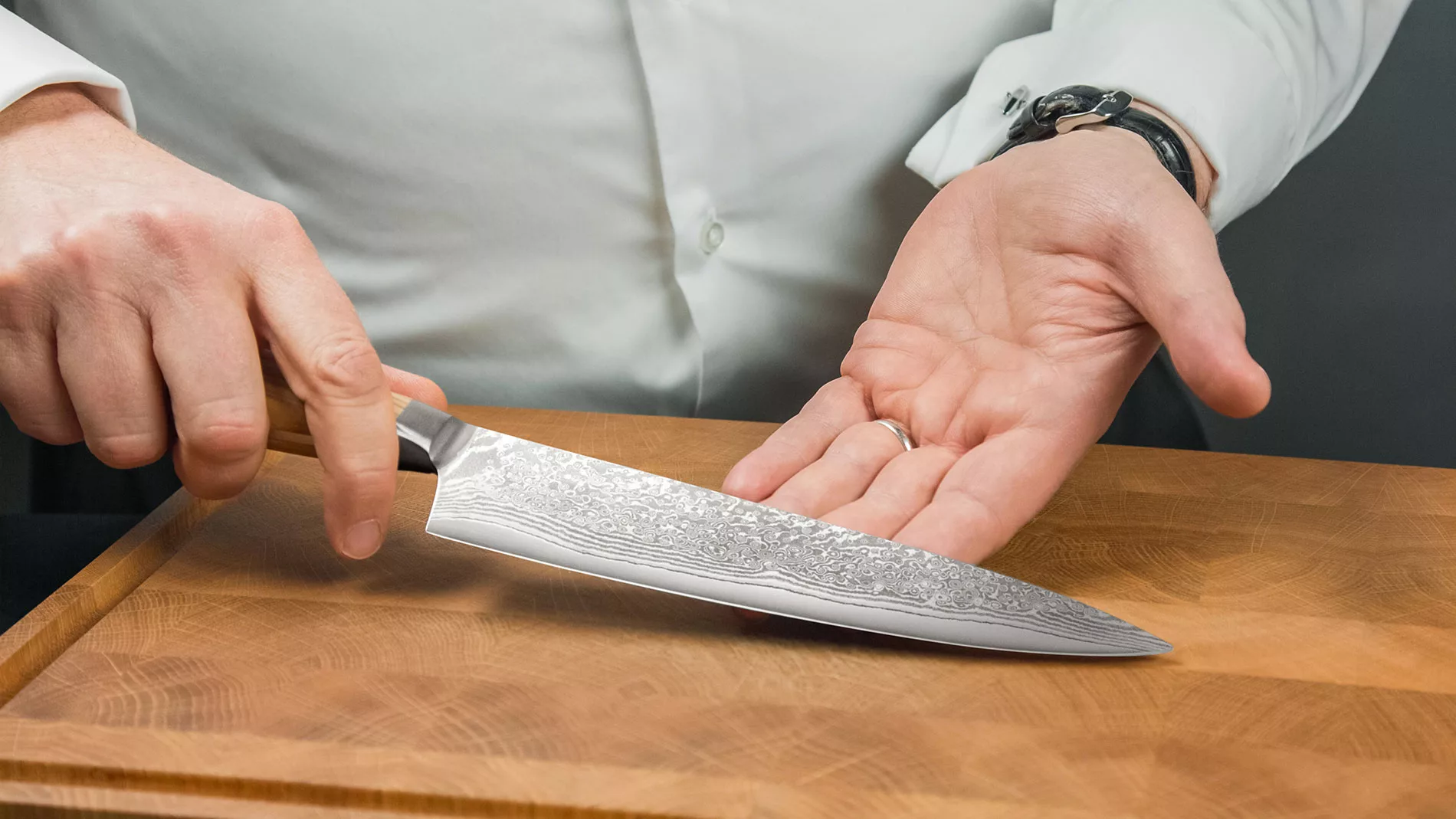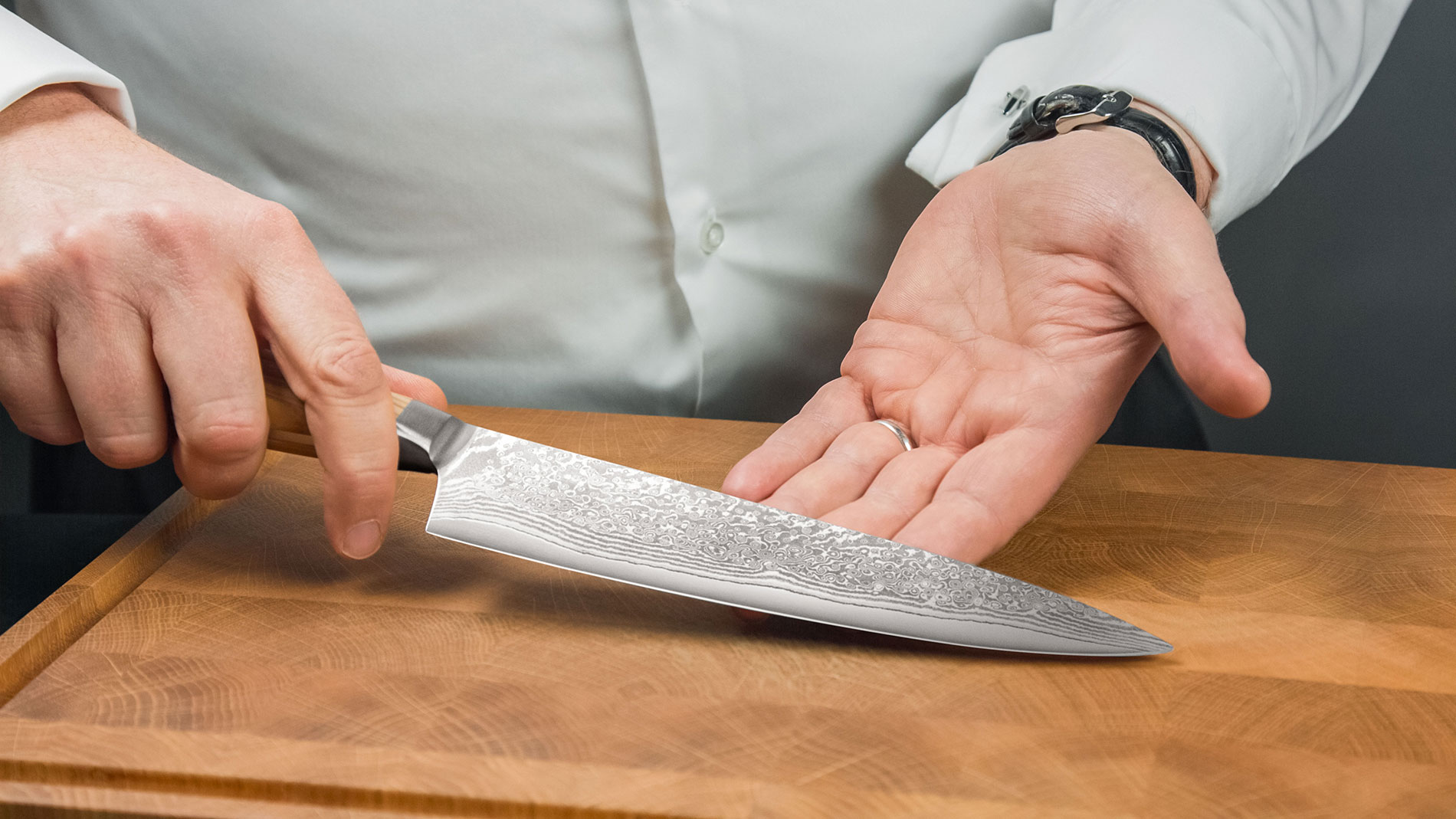

Now the knives are sharpened, namely the cooking knives. But don’t worry, because we mean the whole thing literally.
do you know that?
You would like to prepare a delicious tomato salad for dinner, but your knife does not manage to cut through the skin of the tomato?
Instead, you chop the fruit and all the contents are distributed on the cut surface. In the worst case, you could slip and injure yourself. This happens when you work with a blunt kitchen knife.
Every knife will inevitably become dull after a certain time, even if it is a high-quality steel knife.
Why do knives become dull at all?
Even the best blade made of high-quality steel loses its sharpness with frequent use. The cutting edge is wafer-thin and is pressed into the material during cutting, which puts a lot of stress on the cutting edge – it wears out. As a result, the cutting edge moves further and further upwards and thus becomes wider and wider. The result is a blunt blade that requires a lot of force and pressure to cut. The resulting irregularities on the blade also cause the knife to lose its sharpness.
As soon as you need to apply pressure, it is time to sharpen your kitchen knife, you should do this at regular intervals.
Professional chefs sharpen their knives at short intervals, because that way the knives are in a continuously sharpened condition. If the blade is dull, a lot of material has to be ground off the cutting edge with a coarse abrasive to sharpen it again.
So take time at least once a year to sharpen the knives, you will not regret it, on the contrary, because this way you will always have sharp knives and you will not get tomato puree instead of tomato salad.
But that brings us to the important question:
What methods are there to sharpen a chef’s knife?
These two are the classic accessories for sharpening knives. The sharpening steel consists of a handle with a long rod of highly hardened steel attached to it. This is included in most knife blocks and knife sets, unlike the sharpening stone, which is not normally included in such a set.
Sharpening on a sharpening stone is the supreme discipline, because here you act freehand – if you master this technique, you can sharpen a knife on a variety of stones.
So it is worth investing in these two and having such accessories in your own kitchen. Since you can sharpen your knives in this way at any time, take a look at our online shop.
How to sharpen knives again?
To find the right angle, you can use a geodiag to help you. You can also make an approximate estimate by placing the knife vertically on the sharpener at an angle of 90 degrees, taking half of it at 45 degrees and then slightly more than half again at about 20 degrees.
The knife must be pulled over the sharpener in a semicircle with the entire blade. The only exception is a leather rub, here the blade is pulled backwards over the leather.
Tips on how to protect your knives
If kitchen knives and chef’s knives are cared for incorrectly or not at all, they can even become completely unusable.
Conclusion on the care of chef’s knives
In the future you will find out on our blog everything about our Germancut products and how you can maintain it.
We also provide you with exciting topics about knives, such as bread knives, vegetable knives, the Santoku (the Japanese all-purpose knife) and our cutlery sets as well as our chef’s knives.
In addition, we give you useful tips on how to handle knives and for your kitchen.